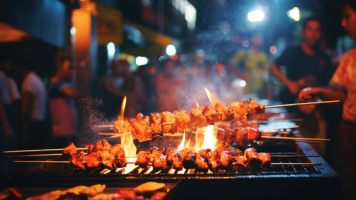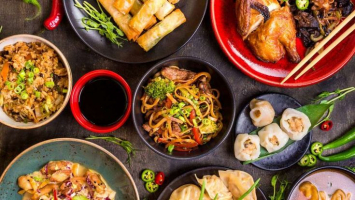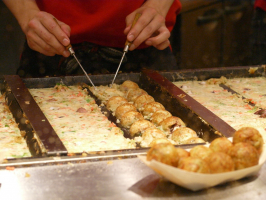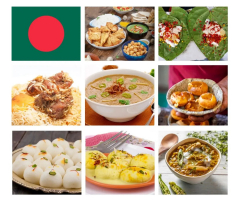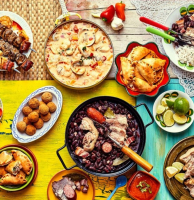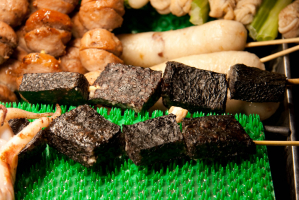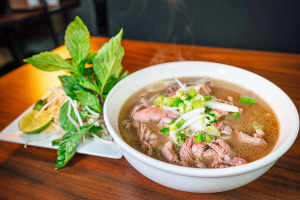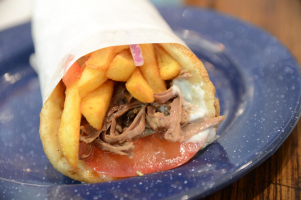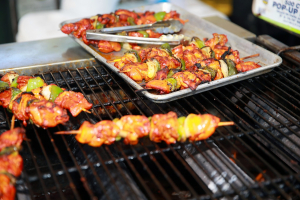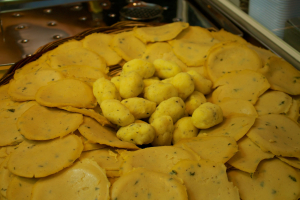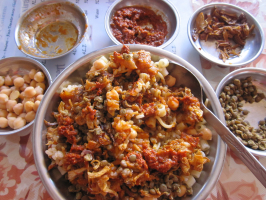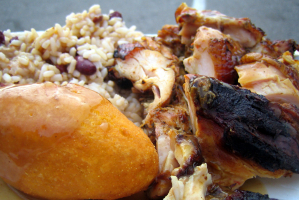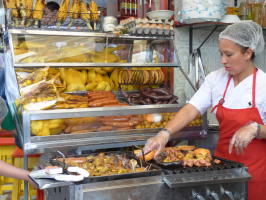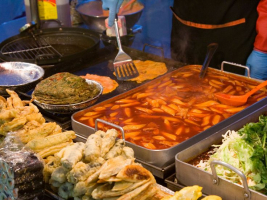Top 10 Most Popular Street Foods in Bangladesh
Discover the vibrant street food scene of Bangladesh and indulge in a remarkable culinary experience. Toplist's team of dedicated experts has meticulously ... read more...evaluated the most popular street food in Seattle, designed to tantalize your taste buds and introduce you to the diverse range of flavors this magnificent city offers.
-
Fuchka, one of Bangladesh's most popular street foods, captures the essence of the country's vibrant culinary scene. Also known as "pani puri" in other regions of South Asia, fuchka is a delightful combination of crispy, hollow flour balls filled with a medley of ingredients that create a burst of flavors in each bite.
To make Fuchka, small, hollow balls made of flour dough are fried until they turn golden and crispy. These delicate spheres provide the perfect vessel for the flavorful fillings that await inside. The fillings usually consist of mashed potatoes and chickpeas, which add a creamy and textural element to the fuchka. Additionally, various spices such as chili powder, cumin, and chaat masala are blended into the filling, infusing it with a delightful punch of flavors.
But what truly elevates Fuchka is the dipping sauce it is accompanied by. A tangy and aromatic sauce is prepared by combining tamarind pulp, coriander, mint, chili, and other spices. The result is a tantalizing fusion of sweet, tangy, and spicy notes that complements the crispiness of the fuchka perfectly. The sauce is poured into the hollow fuchka, filling it up and creating a burst of flavors with each bite.
In Bangladesh, Fuchka is not just a savory snack; it is also a social experience. Street vendors can be found throughout bustling marketplaces, preparing fresh batches of fuchka and engaging in lively conversations with customers. The joy of savoring fuchka lies not only in its delectable taste but also in the communal atmosphere it creates.
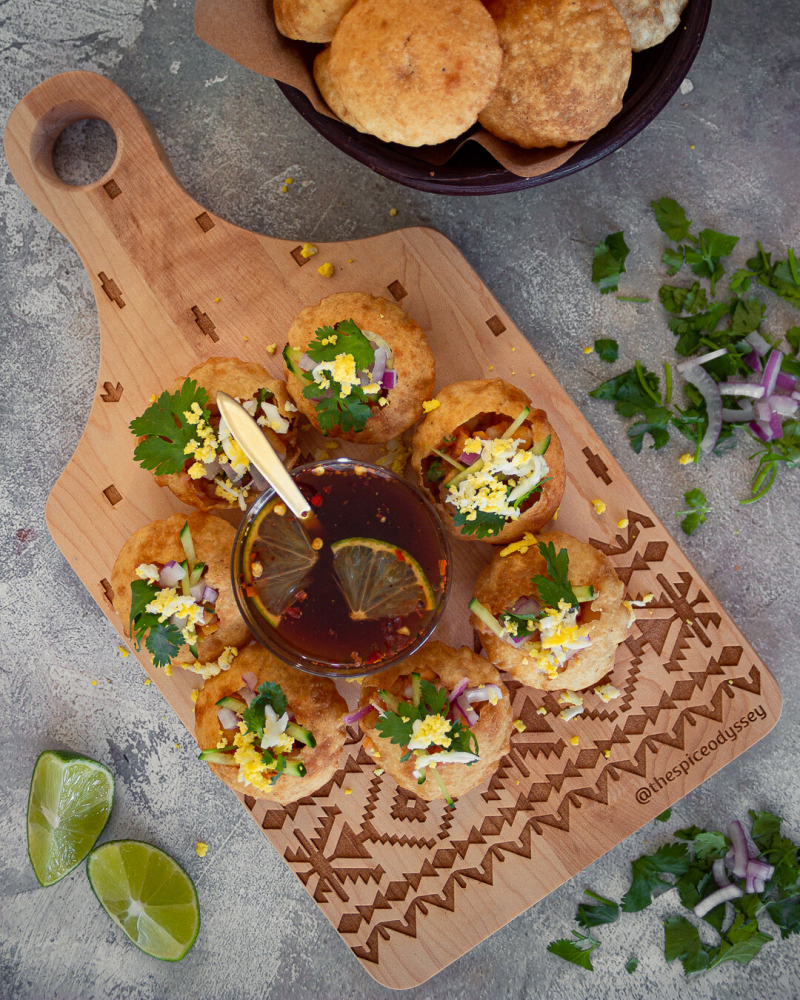
thespiceodyssey.com 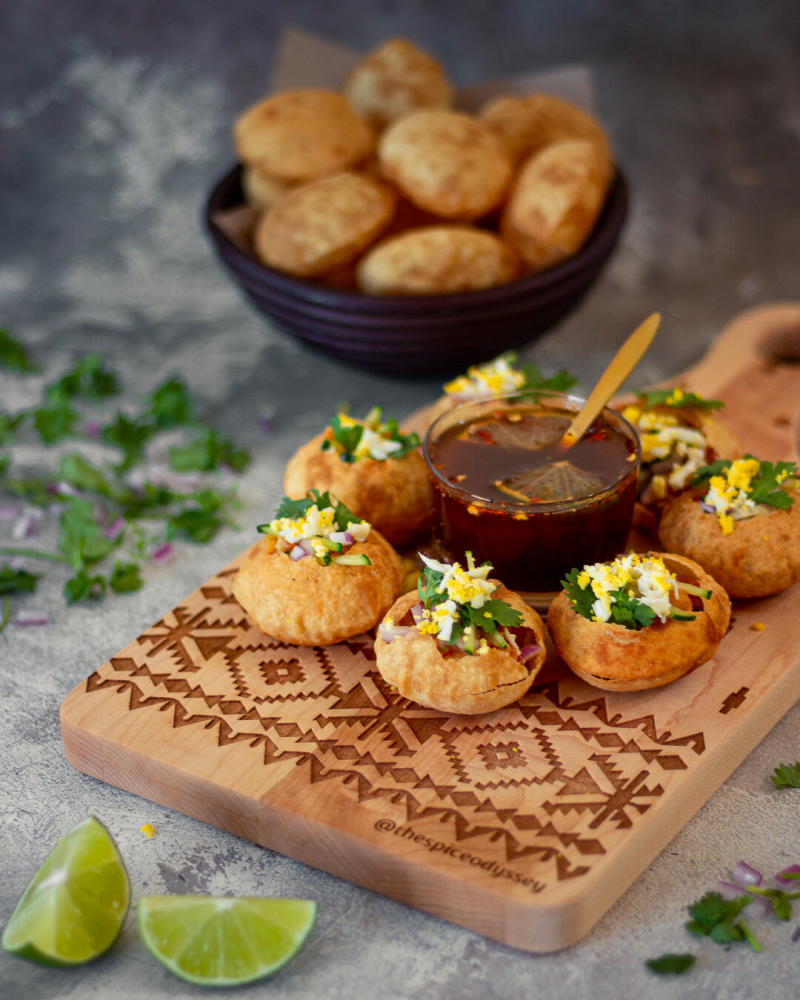
thespiceodyssey.com -
Jhalmuri, a beloved street food snack in Bangladesh, is a delightful combination of textures and flavors that tantalizes the taste buds. Made from puffed rice, jhalmuri is a light and crispy treat that is mixed with a medley of ingredients to create a spicy and tangy flavor profile.
The main star of Jhalmuri is the puffed rice itself. This fluffy and crunchy ingredient forms the base of the snack, providing a satisfying texture and a neutral canvas for the other ingredients to shine.
To add a burst of freshness, Jhalmuri is typically mixed with chopped onions, tomatoes, and coriander leaves. These vegetables not only add a vibrant pop of color to the snack but also contribute a refreshing and aromatic element.
Peanuts are a key component of Jhalmuri, adding a delightful crunch and nutty flavor to each bite. They also provide a source of protein, making Jhalmuri a satisfying and wholesome snack option.
Jhalmuri is not just a tasty treat; it is also a cultural experience. In Bangladesh, Jhalmuri is often prepared and served by street vendors, who skillfully toss and mix the ingredients in front of the customers. This lively interaction adds to the charm and excitement of indulging in this flavorful street food snack.
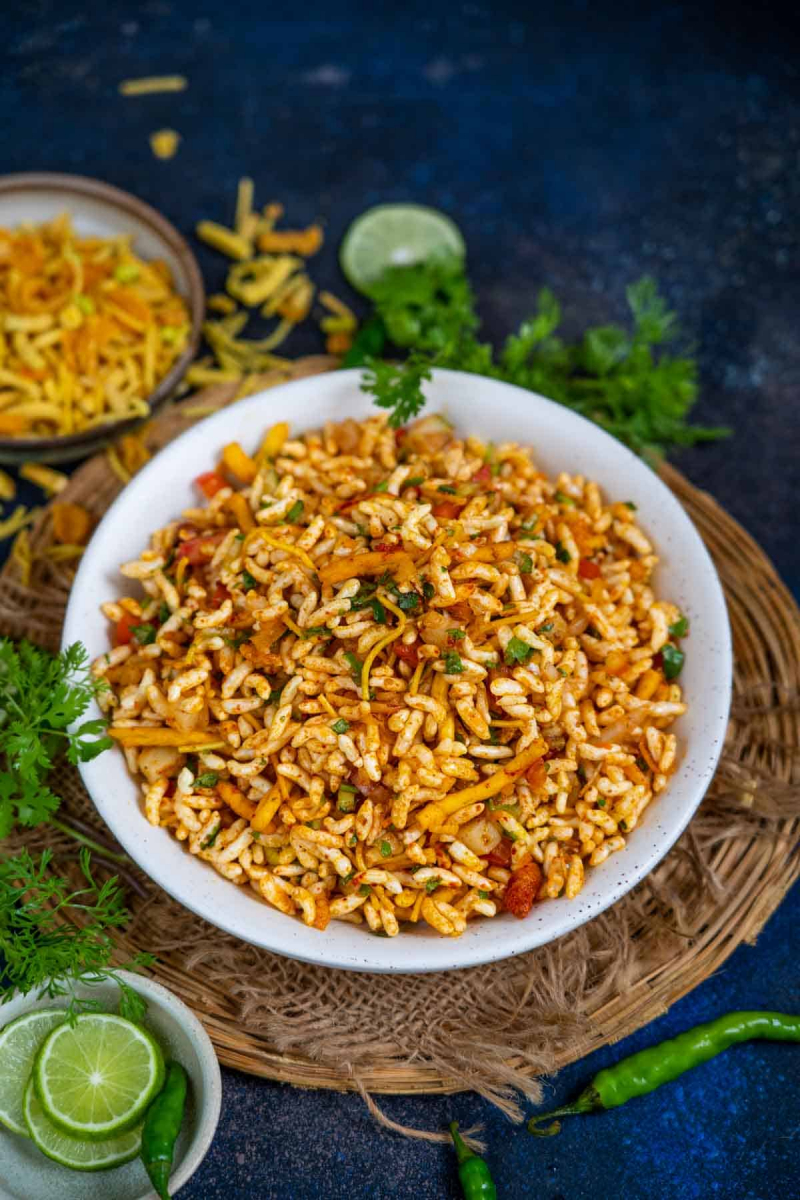
whiskaffair.com 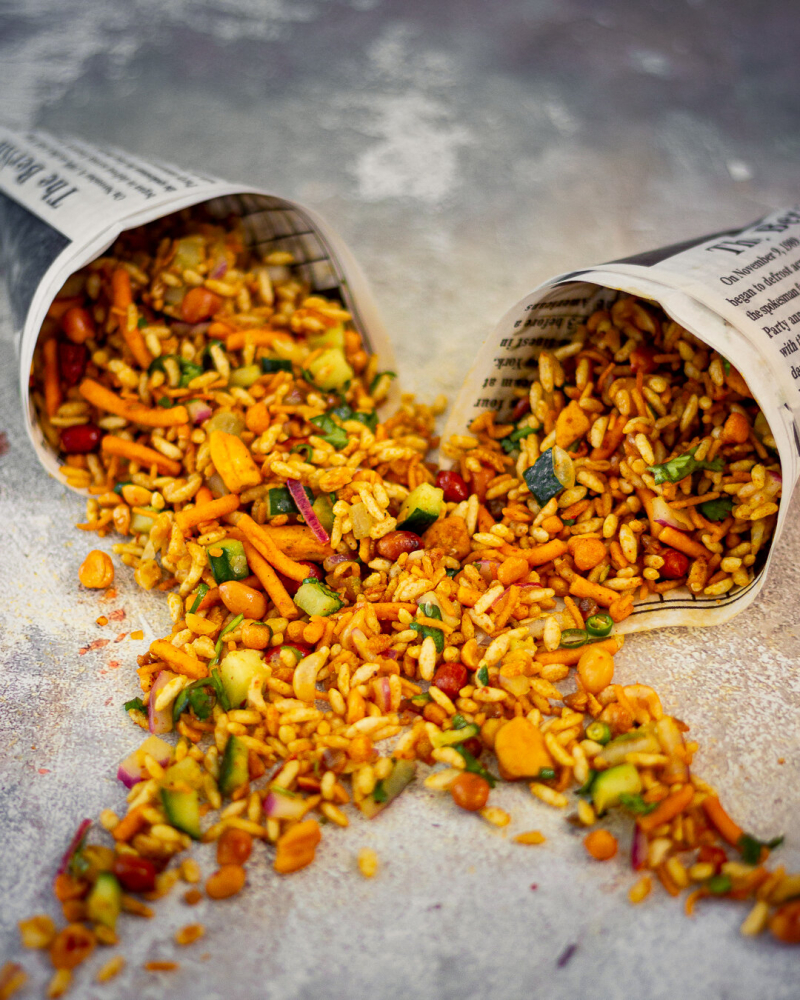
thespiceodyssey.com -
Chotpoti is a popular street food dish in Bangladesh, known for its unique combination of flavors and textures that create a delightful eating experience. The dish is made by boiling yellow peas, also known as vatana or white peas, until they become tender and soft. The cooked peas are then combined with finely chopped onion, chili, and cilantro to add freshness and a hint of spiciness. The resulting blend of flavors is tangy and savory, making Chotpoti a culinary masterpiece in its own right.
What makes Chotpoti truly special is the addition of tamarind sauce. The tangy sauce not only adds a burst of flavor but also helps to balance the spiciness of the dish, creating a well-rounded taste. To prepare the sauce, tamarind pulp is boiled with spices and sugar, resulting in a sweet and tangy sauce that complements the other ingredients perfectly.
Chotpoti is usually served with luchi, a crispy and crunchy deep-fried flatbread made from white flour. The luchi adds a satisfying crunch to the dish and contrasts well with the soft and creamy peas. This combination of creamy chotpoti and crispy luchi creates a delightful play of textures that enhances the overall eating experience.
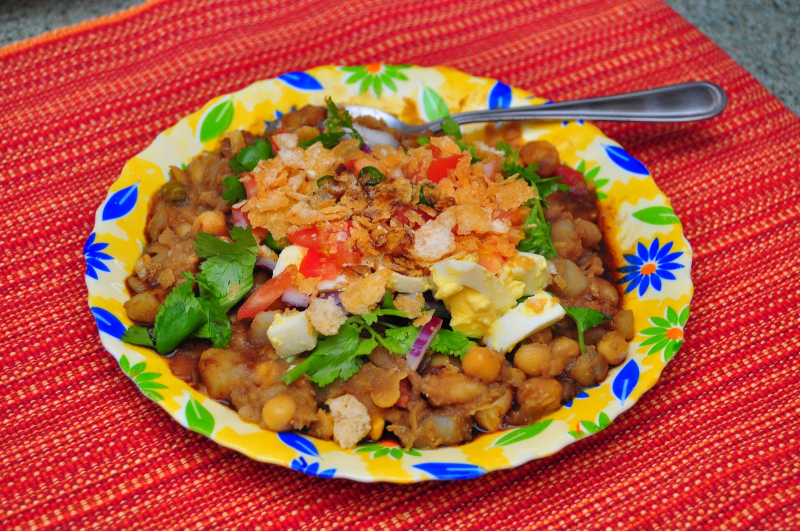
soniajahid.blogspot.com 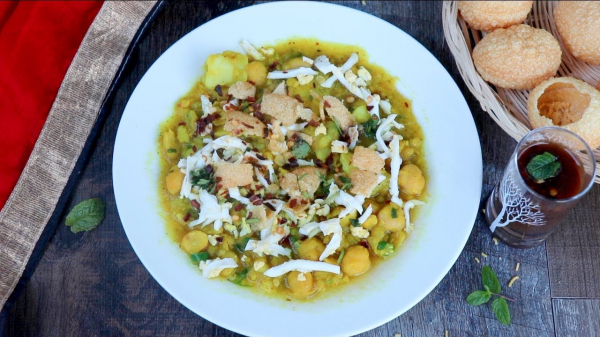
daily-bangladesh.com -
Dal Puri, also known as Dal Poori, is a beloved street food item that originated in the Indian subcontinent. It is a delicious deep-fried bread that is filled with a flavorful lentil mixture. The lentils used in Dal Puri are typically soaked and cooked until soft, and then seasoned with a variety of aromatic spices such as cumin, coriander, turmeric, and chili powder.
To prepare Dal Puri, the lentils are mashed or ground into a paste-like consistency. The lentil mixture is then rolled into small balls and flattened into discs. The lentil discs are placed on a circle of dough made from wheat flour, which is then folded and sealed, creating a pocket that holds the lentil filling. The filled dough is then rolled out into a flatbread and deep-fried until golden and crispy.
The result is a delightful combination of crispy outer layers and a savory lentil filling. The lentil filling adds a rich and earthy flavor to the bread, making each bite burst with deliciousness. Dal Puri can be enjoyed on its own as a snack or paired with a side of tangy tamarind sauce or a spicy chutney for an extra kick of flavor.
Apart from being a popular street food, Dal Puri is also enjoyed during festivals and special occasions. It is a versatile dish that can be eaten for breakfast, as a snack, or even as a main meal when accompanied by delicious curries or vegetable dishes.
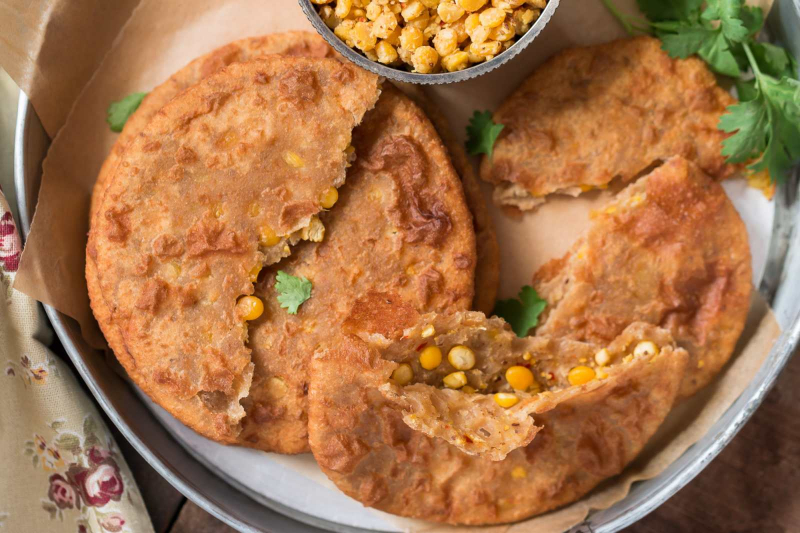
archanaskitchen.com 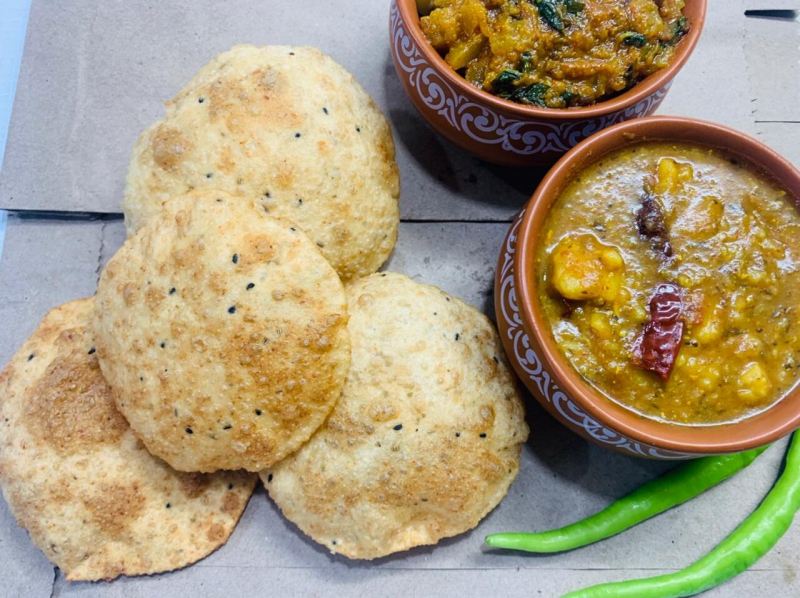
foodie-trail.com -
Lassi is a beloved and classic yogurt-based drink that has long been cherished in Bangladesh as a refreshing respite from the scorching heat. This delightful beverage is made by blending yogurt, water, and sugar, resulting in a creamy and cool texture that quenches thirst and provides a delicious boost of energy.
The process of making Lassi is quite simple. Fresh and creamy yogurt is combined with water in a blender, along with a desired amount of sugar for sweetness. The mixture is then blended until smooth and well-combined. This basic version of lassi is known as "sweet lassi" and is enjoyed by many.
In addition to the classic version, Lassi also comes in various flavors to cater to different preferences. One popular variation is mango lassi, where ripe mangoes are pureed and added to the yogurt base, creating a tantalizing blend of creamy yogurt and tropical sweetness. Another variation is rosewater lassi, where a dash of fragrant rosewater is added to the mixture, imparting a delicate floral note.
Beyond its delicious taste, Lassi offers several health benefits. It is a probiotic-rich beverage, as yogurt contains live and active cultures that promote a healthy gut. It is also a good source of calcium, protein, and vitamins, making it a nourishing choice for a mid-day pick-me-up.
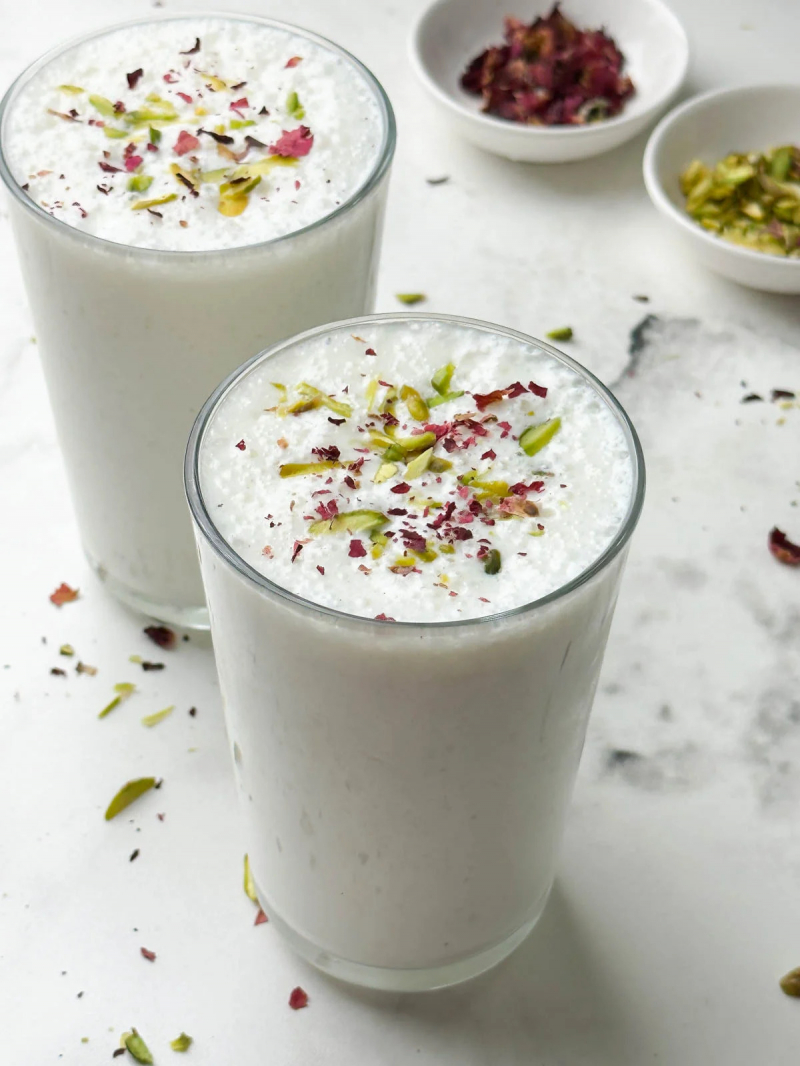
indianveggiedelight.com 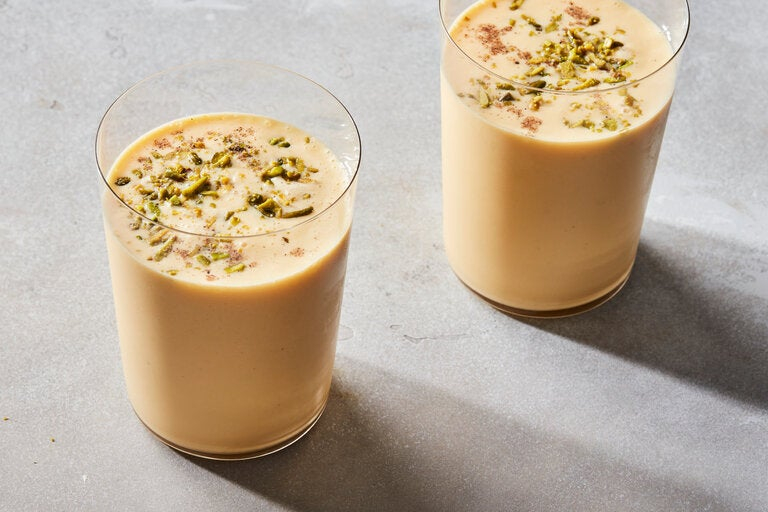
cooking.nytimes.com -
Paratha, a beloved street food in Bangladesh, holds a special place in the hearts and palates of its people. This flaky and layered flatbread is made with whole wheat flour, known as atta, and is a versatile and satisfying option for breakfast or a snack any time of the day.
To make Paratha, the process involves rolling out the dough into a thin circle. After that, brush it with ghee or oil. The dough is then folded and rolled again, which creates layers resulting in a soft and flaky texture when it's cooked. Lastly, cook the paratha on a griddle or tawa until it turns golden brown and develops appetizing charred spots.
Paratha is often enjoyed with a variety of accompaniments, adding to its versatility and flavor. It pairs well with different curries, such as chickpea curry (chana masala), potato curry (aloo tarkari), or a mixed vegetable curry (sobji tarkari). The combination of the warm and flaky paratha with the savory and aromatic curries creates a delightful culinary experience.
Aside from curries, Paratha is also commonly eaten with chutneys, pickles, yogurt, or even a fried egg on top. These accompaniments add a tangy, spicy, or creamy element that complements the bread beautifully.
In Bangladesh, Paratha is readily available at street food stalls, where it is freshly prepared and served piping hot. It is a popular choice among locals who appreciate the simplicity and deliciousness of this street food staple.
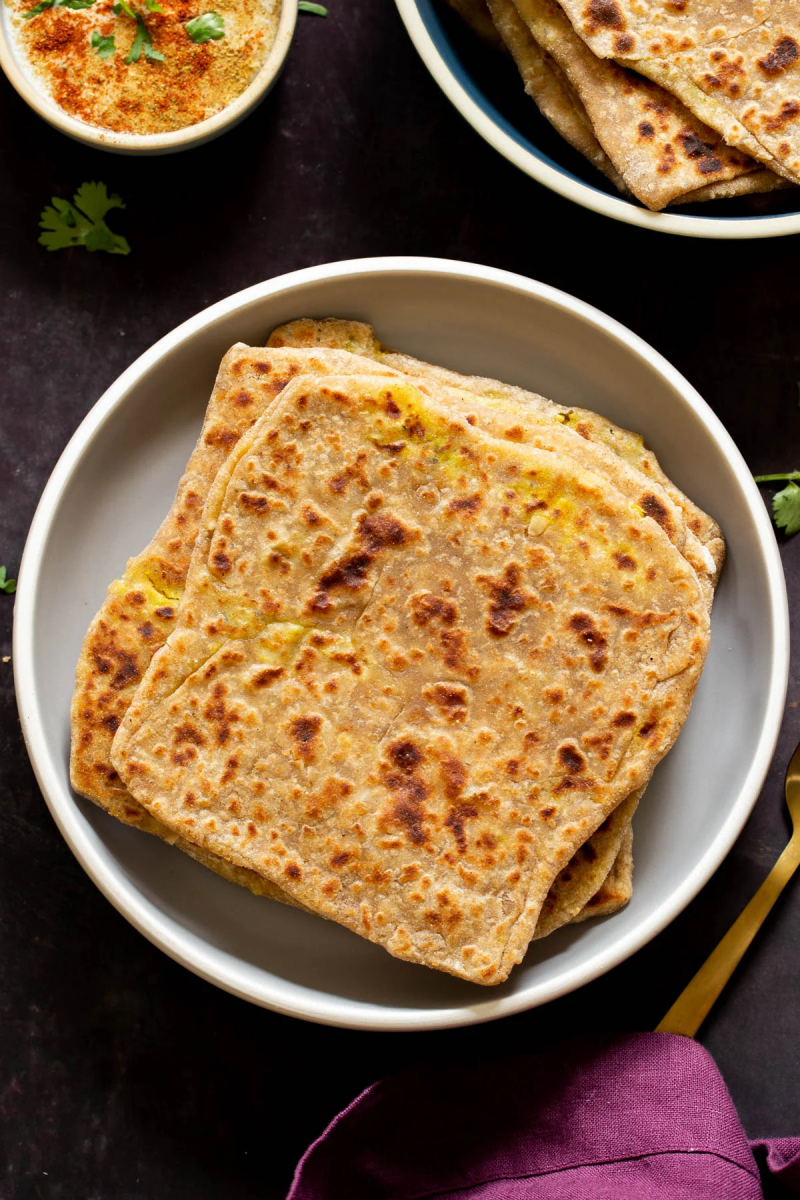
veganricha.com 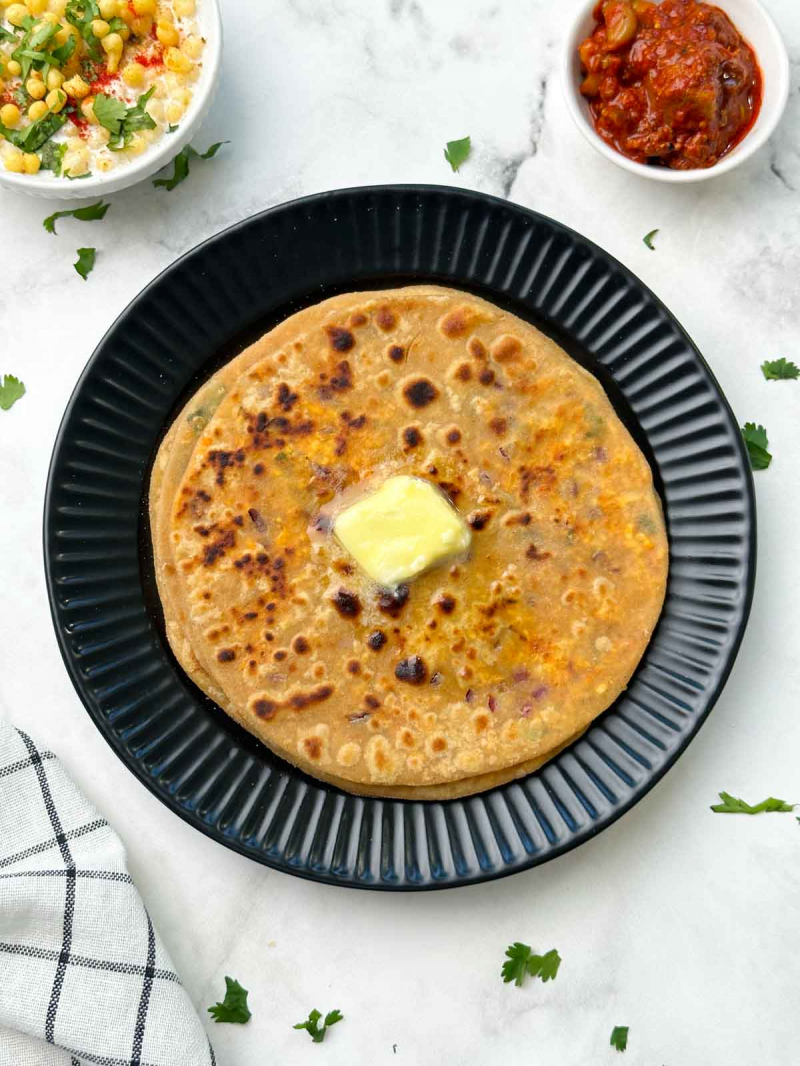
indianveggiedelight.com -
Shingara, also known as samosa, is a beloved street food snack that holds a special place in the culinary culture of Bangladesh. This savory delight consists of a deep-fried pastry filled with a delightful mixture of spiced potatoes, peas, onions, and, in some variations, minced meat. The combination of the crispy outer layer and the flavorful filling creates a snack that is both satisfying and delicious.
To make Shingara, a dough made from flour, oil, and water is shaped into thin triangles or cones. The filling, which is the heart of the shingara, is prepared by cooking potatoes, peas, onions, and an array of aromatic spices. These spices could include cumin, coriander, turmeric, chili powder, and garam masala, among others. The filling is then stuffed into the dough, and the edges are sealed to ensure that they hold their shape during the frying process.
The filled Shingaras are deep-fried until they turn golden brown and attain a satisfyingly crisp texture. The frying process adds an irresistible crunch to the outer layer, while the flavors of the spiced filling meld together, creating a symphony of taste.
Shingaras are not only a popular street food snack but are also an integral part of festive occasions and celebrations in Bangladesh. They are often served as appetizers or evening snacks, along with various chutneys and sauces for dipping.
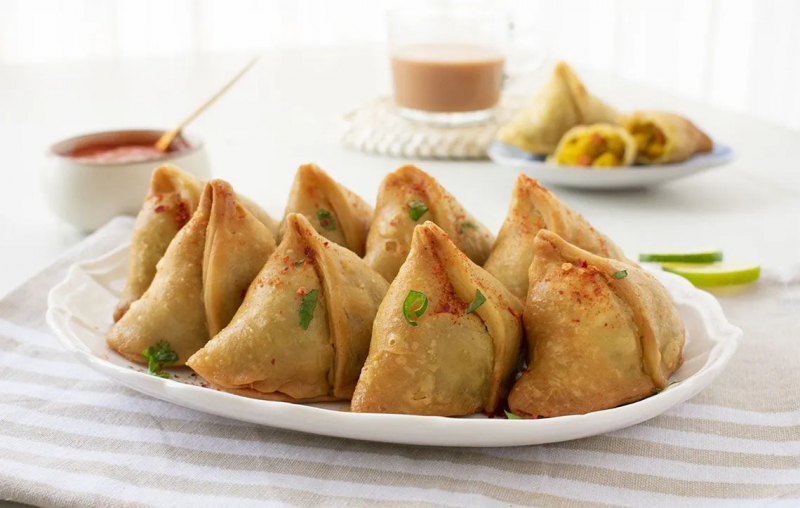
spiceandcolour.com 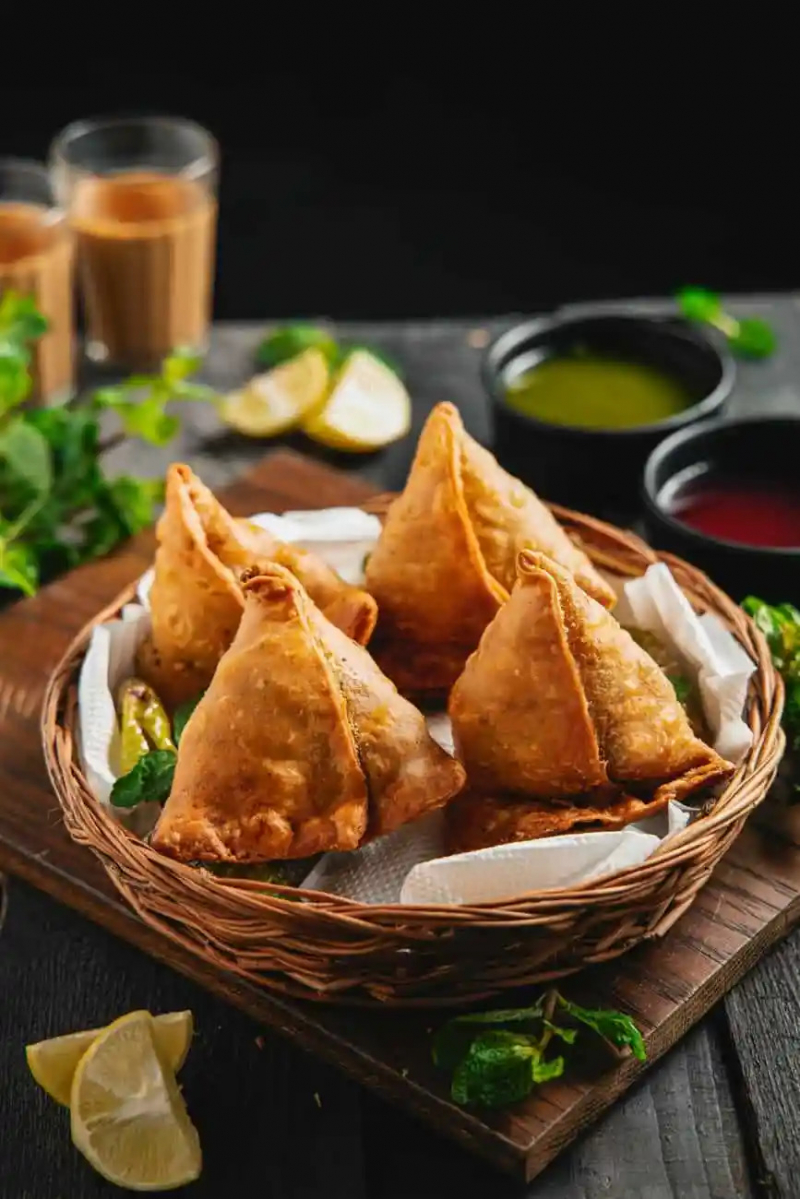
thelemongrove.net -
Beguni, a popular street food snack, is a culinary delight made from deep-fried slices of eggplant coated in a gram flour batter. This crispy and golden-brown delicacy is enjoyed by many as a satisfying and flavorful snack option.
The history and origins of Beguni are not widely documented. However, it is believed to have originated in the Indian subcontinent, specifically in the region of Bengal, where it is still widely enjoyed today. Bengal is known for its rich culinary traditions, and Beguni is a testament to the creativity and ingenuity of Bengali cuisine.
The process of making Beguni begins with slicing eggplant into thin rounds. These slices are then dipped in a gram flour batter, which is made by combining gram flour (besan), spices such as turmeric, chili powder, and salt, and a little water to form a thick and smooth batter. The eggplant slices are coated evenly with the batter and then deep-fried until they become crispy and golden-brown.
The end result is a plate of irresistibly crunchy Beguni that is typically served with a side of tangy tamarind sauce or chutney. The combination of the crispy exterior and the soft, melt-in-your-mouth texture of the eggplant makes for a delightful snacking experience.
Beguni is often a popular choice during festivals and special occasions, where it is served as a part of the traditional spread. It is also commonly found in street food markets and stalls, where the aroma of the deep-frying Beguni wafts through the air, tempting passersby.
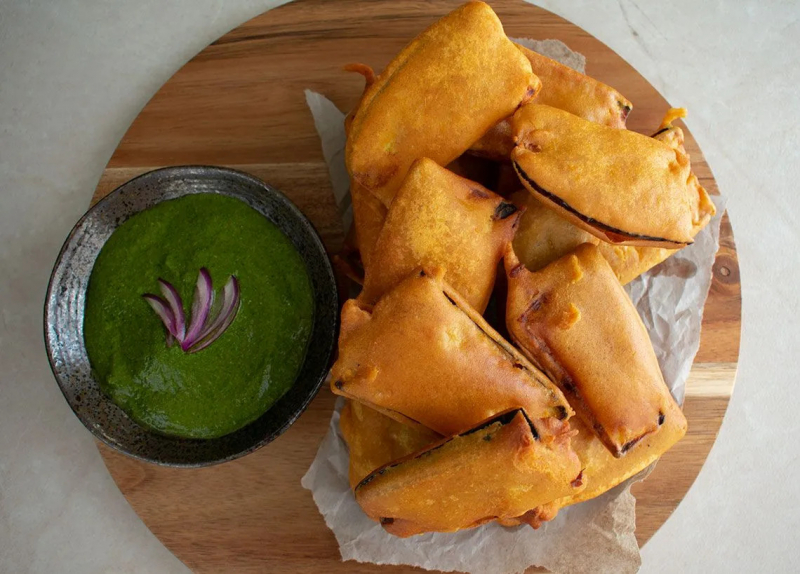
spiceandcolour.com 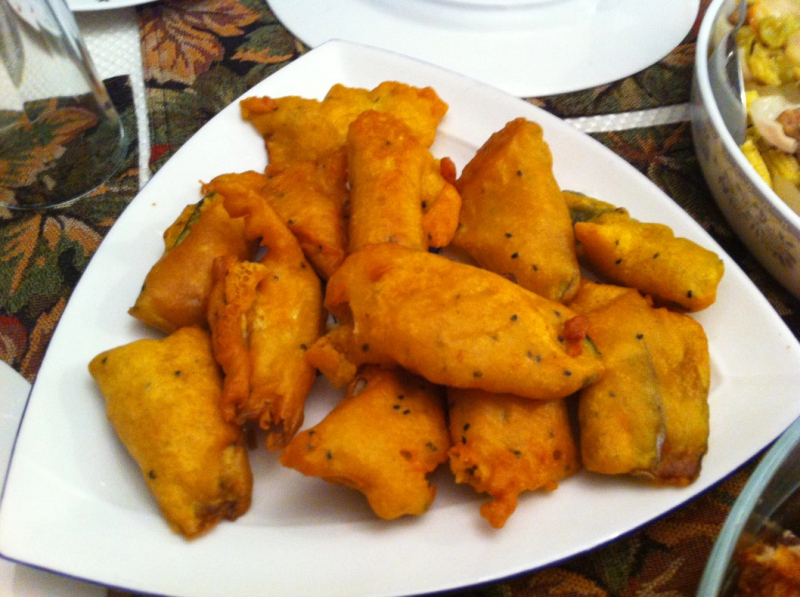
betterbutter.in -
Chola Bhuna is not just a popular street food dish in Bangladesh; it holds a significant place in Indian cuisine, particularly in the northern regions of the country. This flavorful and hearty dish features spicy and tangy chickpea curry, which is created by cooking chickpeas in a blend of aromatic spices, onions, tomatoes, and chili peppers.
The preparation of Chola Bhuna involves various steps to ensure that the flavors are well-developed. First, the dried chickpeas are soaked overnight and then cooked till tender. In a separate pan, a mixture of spices like cumin, coriander, turmeric, and garam masala is dry-roasted to enhance their flavors.
Onions are sautéed until golden brown, followed by the addition of garlic, ginger, and chili peppers for a punch of heat. Once the onions, ginger, and garlic have cooked down, the roasted spice mixture is added, infusing the curry with its distinct aroma.
Fresh tomatoes are then added to the mixture, providing acidity and balancing the flavors. The cooked chickpeas are then incorporated into the base, allowing them to absorb all the delicious spices and flavors. The dish is simmered for a while to allow the flavors to meld together.
Chola Bhuna is often served with flatbread such as naan or roti, which helps soak up the flavorful curry. It can also be enjoyed with steamed rice, providing a hearty and satisfying meal. Garnishing options for Chola Bhuna are plenty, ranging from freshly chopped cilantro, a squeeze of lime juice, or a dollop of yogurt to cool down the spiciness.
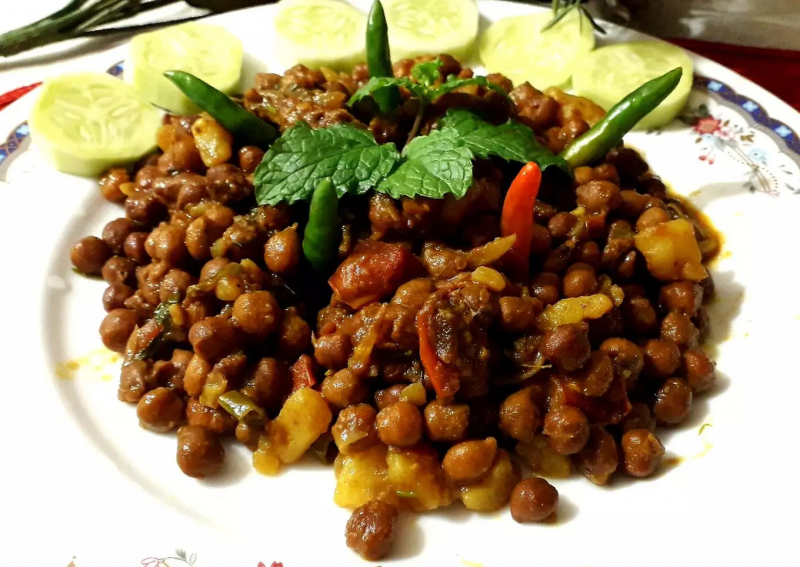
khadizaskitchen.com 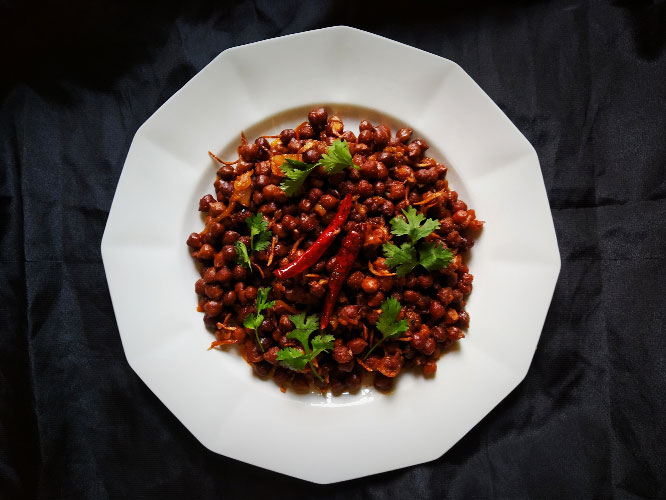
observerbd.com -
Jilapi, or jalebi as it is commonly known, is not only a beloved sweet street food in Bangladesh but also has a rich history and variations across different regions. This crispy and sticky treat is made by deep-frying a wheat flour batter in a spiral shape and then soaking it in a sugar syrup.
The origins of Jilapi can be traced back to Western Asia, specifically the Middle East and Persia. The earliest mention of a similar sweet dish called Zulbiya dates back to the early 10th century. Persian cookbooks like 'Kitab al-Tabeekh' and Arabic cookbooks by Ibn Sayyar al-Warraq document the recipe and describe it as a sweet traditionally distributed among the masses during Ramadan and other festivities.
Over time, Jilapi made its way to the Indian subcontinent, including Bangladesh, where it became immensely popular. It is enjoyed by people of all ages and is commonly found in street food stalls and sweet shops across the country.
The preparation of Jilapi can vary slightly depending on the region, with some variations including the use of sesame oil, sesame seeds, yogurt, cinnamon, lemon, or cardamom for added flavor. The shape of the jilapi can also differ, ranging from a spiral to a pretzel-like shape called imarti.
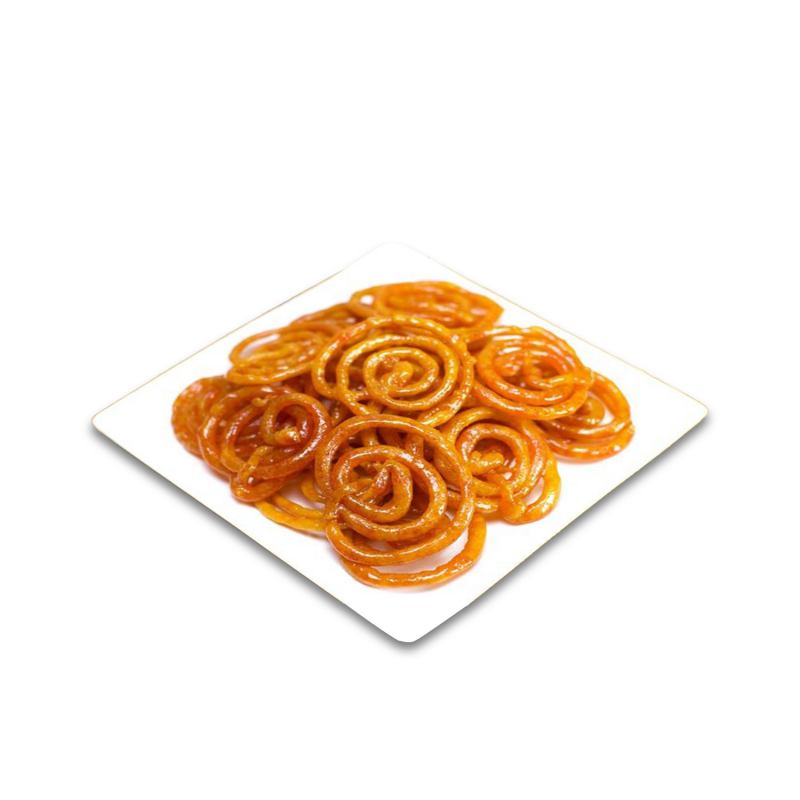
wellfoodonline.com 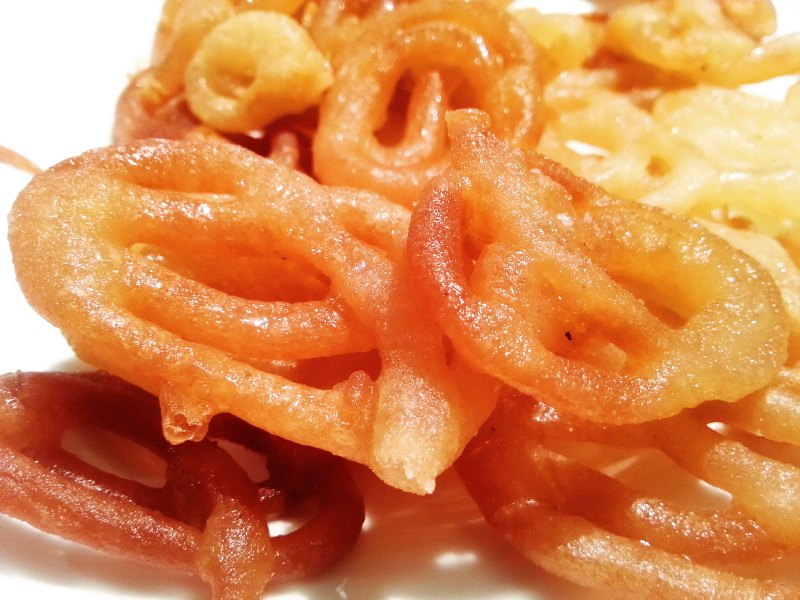
en.m.wikipedia.org












